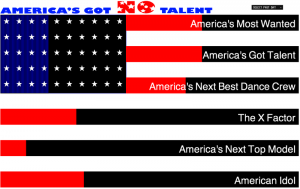The New Order Art and Technology in the Twenty-first Century is a collection at the MoMA that creates art from the disruption of technology. “The show features works made since the turn of the millennium that push and challenge the boundaries of technology: upending systems, experimenting with materials, and ultimately inventing novel techniques and substances.” (MoMA 2019 p.3)
One piece I found interesting was the 23-minute video insulation which is played on a loop. The film which is called Eye/Machine I, II, III (2000-2003) was created by German filmmaker Harun Farocki. Farocki explores the question of how military image technologies find their way into civilian life. The images in the film were taken from missiles, real-time photographed/film of droppings and the (computer) simulated images of the Gulf War in 1991. The Gulf War is said to be the starting basis for electronic warfare.

The film is centered on the images of the Gulf War which caused a worldwide sensation in 1991. The shots taken from The loss of the ‘genuine picture’ means that the eye no longer has a role as a historical witness. It has been said that what was brought into play in the Gulf War was not new weaponry but rather a new policy on images. In this way, the basis for electronic warfare was created. All the works presented are double projections. The dual images serve as a comparison between idea and reality, a confrontation between pure war and the impurity of the actual. This confrontation is also a montage and montage is always about similarity and difference. According to Harun Farocki In a double projection, there is succession as well as simultaneity, the relation of an image to the one succeeding it as well as to the one next to it.
My favorite piece of the exhibit was Josh Kline’s Skittles, which was a commercial refrigerator filled with fifteen different smoothie flavors line the shelves of Kline’s lightbox–encased commercial refrigerator. Each bottle lists the unorthodox ingredients contained within, including latex gloves, octopus ink, Ritalin, and Google Glass eyewear. Each drink has names like Big Data, Supplements, Minimum Wage, NIghtlife, Williamsburg.

I found this piece to be a satirical commentary on today’s society, a message to the upper class who can afford these luxury $10-15 drinks that the smoothies are modeled after. Each drink is made up of a mixture of ingredients that are indicative in these places such as Kmounbca, Kale chips, and microbrew being ingredients in the Williamsburg drink. Each formula evokes the economies of goods, services, and technologies that surround us, infecting everything from our diets to our sex lives. Skittles has to be made anew each time it is shown, and it will morph and decay during the course of the exhibition. The ever-shifting solutions suggest the ways in which our bodies have been engineered, chemically altered, and transformed by technologies of consumption.
